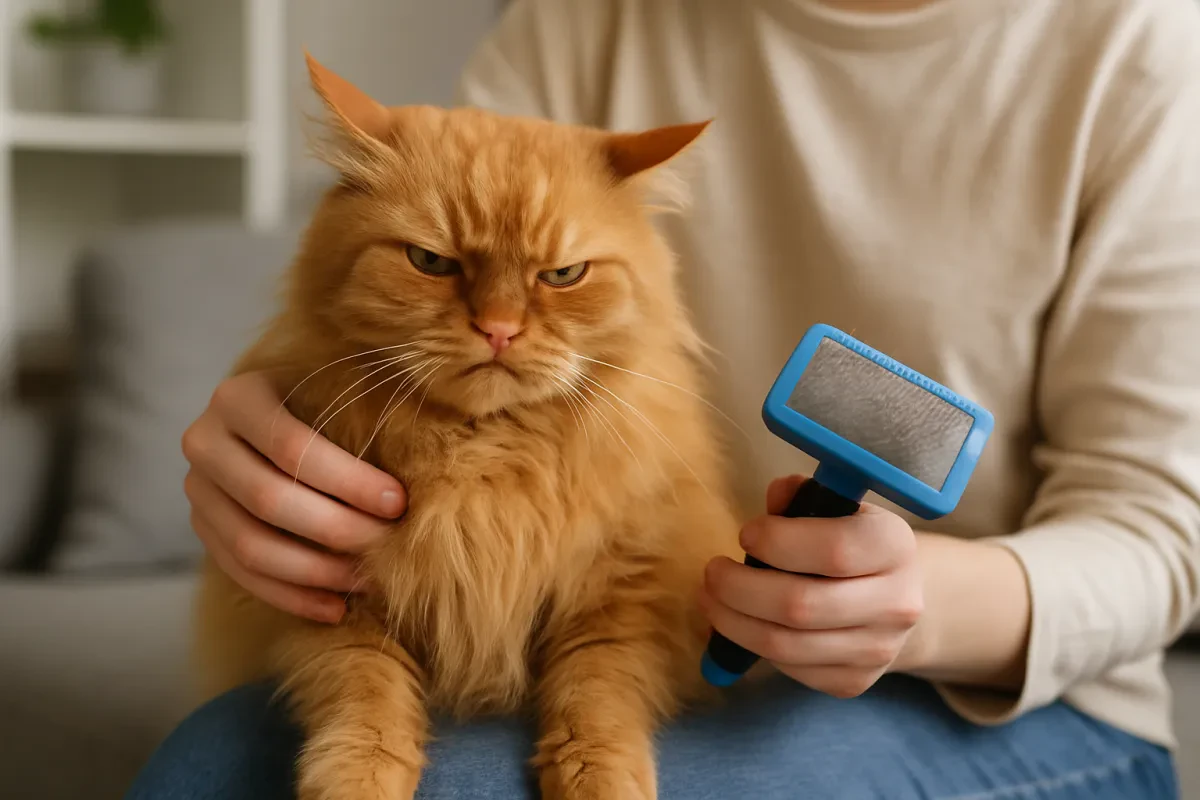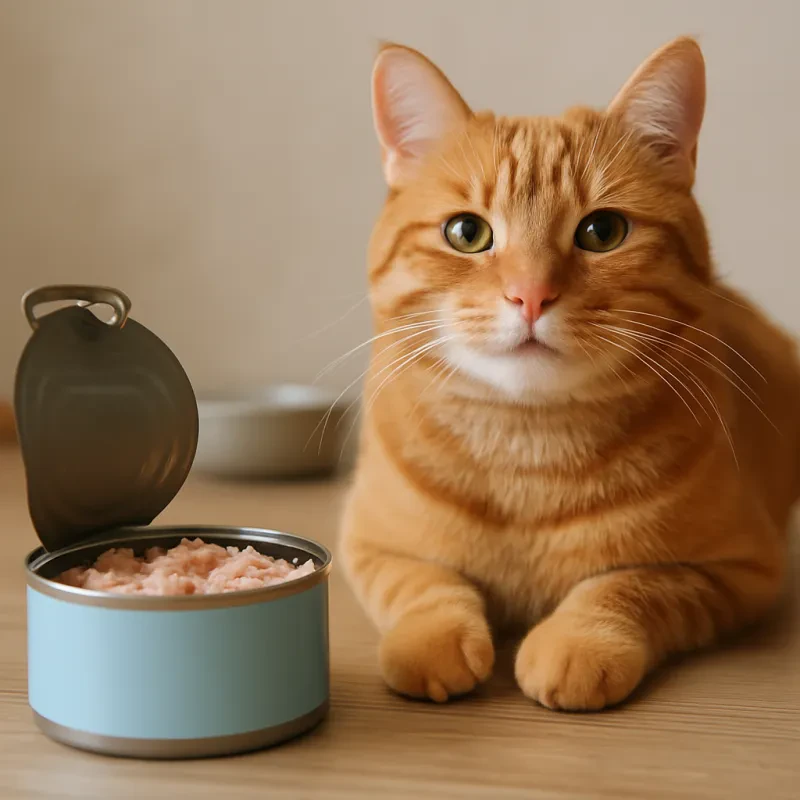If your cat reacts to the sight of a brush like it’s a medieval torture device, you’re not alone. Many cats, who are sweet and cuddly companions, suddenly become ninja escape artists the moment grooming time begins. But keeping your cat’s coat in good shape isn’t optional — it’s essential for their comfort, skin health, and your furniture’s survival.
The good news? With the right tools, patience, and a few clever tricks, even the most brush-averse feline can learn to tolerate — and sometimes even enjoy — grooming. Let’s break down how to turn your cat’s “nope!” into a (mostly) calm “okay, fine.”
🐾 Why Some Cats Hate Brushing
Before jumping into strategies, it helps to understand why your cat might despise brushing in the first place.
-
Sensitivity to touch: Some cats have delicate skin or dislike certain textures, which can cause them to pull on their fur.
-
Bad past experiences: A rough grooming session, painful mat removal, or the sound of a metal comb can make lasting impressions.
-
Loss of control: Grooming requires restraint and touch — two things independent-minded cats don’t always appreciate.
-
Overstimulation: Cats have nerve-rich areas, especially along their backs and tails. Too much brushing there can make them twitchy or even aggressive.
Understanding your cat’s discomfort is the first step toward building a routine they can tolerate (and maybe even enjoy).
✨ Step 1: Start Slow — Way Slower Than You Think
When it comes to brushing-hating cats, rushing is your enemy. Instead, introduce grooming gradually, over days or even weeks.
-
Begin with scent familiarity.
Leave the brush near your cat’s favorite nap spot. Let them sniff and rub against it on their own terms. Cats are naturally curious, and they’ll feel safer when they decide the brush isn’t a threat. -
Touch before brushing.
Start by petting your cat with your hand in the same motion you’d use with a brush — gentle, short strokes. Once they relax, hold the brush in your hand, but don’t use it yet. -
Add just one stroke.
When your cat seems comfortable, give a single brush stroke in a low-sensitivity area (like the cheek or shoulder). Follow up immediately with a treat or calm praise. Then stop. Ending early leaves your cat with a positive impression. -
Build consistency.
Over time, add more strokes, but always end on a good note — before your cat loses patience.
Remember, success here isn’t about grooming your entire cat in one go. It’s about teaching them that the brush doesn’t predict discomfort.
🧤 Step 2: Use the Right Tools for the Job
Not all brushes are created equal — and the wrong one can make even the calmest cat cranky.
-
For short-haired cats:
A soft-bristle brush or rubber grooming glove often works best. They mimic petting, which feels less invasive. -
For long-haired cats:
Try a wide-toothed comb or a slicker brush with fine, flexible bristles. Start from the tips and gently work toward the roots to prevent tugging. -
For extra-sensitive cats:
A silicone grooming glove or soft grooming mitt lets you brush while petting. Most cats don’t even realize they’re being groomed — sneaky but effective!
Always avoid harsh metal brushes or tools that pull. If you’re unsure, test the bristles on your inner wrist — if it feels scratchy to you, it’ll feel worse to your cat.
🍗 Step 3: Make It a Rewarding Experience
Even cats who dislike brushing love consistency and comfort. The goal is to make grooming part of a routine they look forward to.
-
Treats are your best friend.
Give small, irresistible rewards (like lickable treats or bits of cooked chicken) after every short session. -
Create a calm environment.
Pick a quiet spot — no TV, loud voices, or kids running by. Cats pick up on energy, and your calmness helps them stay relaxed. -
Pair grooming with something positive.
Many cats associate certain times (like after meals or before naps) with feeling safe. Grooming right after these moments can help them stay calm. -
Use praise and touch.
Speak softly and give gentle pets between strokes. Cats may not understand your words, but they’ll feel your tone.
Over time, your cat will start associating brushing with positive experiences — such as attention, treats, and calmness.
🧼 Step 4: Handle Mats and Tangles Gently
If your cat has long fur or tends to mat easily, you’ll need to be especially careful. Pulling on mats can be painful and only deepen their dislike of grooming.
-
Never yank or cut mats.
Instead, use a mat splitter or your fingers to loosen the tangle gently. -
Spritz with a detangling spray.
A cat-safe grooming spray can make combing smoother and less painful. -
Break it up into sessions.
Work on one section per day instead of trying to tackle everything at once.
If mats are large or close to the skin, it’s safer to visit a professional groomer or vet. Sometimes sedation is the kindest option for extremely matted cats.
🐱 Step 5: Know When to Call in Reinforcements
If your cat turns into a whirlwind of claws and hissing no matter what you try, there’s no shame in asking for help.
-
Professional groomers who specialize in cats can work wonders. They’re trained to handle nervous felines safely and can show you proper at-home techniques.
-
Veterinarians can rule out skin conditions or pain that might make brushing uncomfortable.
-
Mobile groomers who come to your home can help reduce stress for cats that dislike travel.
The goal isn’t to prove you can do it yourself — it’s to keep your cat healthy and happy.
🌸 Step 6: Maintain Fur Health Between Brushes
If brushing remains a struggle, you can still keep your cat’s coat in good shape with small daily habits:
-
Wipe-downs: Use a damp microfiber cloth or grooming wipes to remove loose fur and reduce dander.
-
Balanced diet: Omega-3 fatty acids (often in fish oil supplements) help keep fur shiny and reduce shedding.
-
Playtime: Active cats naturally shed more loose fur during movement, which helps prevent matting.
-
Regular checkups: Healthy skin equals easier grooming — and less resistance from your cat.
Even minor grooming efforts add up, especially for cats that truly despise brushes.
💕 Patience (and a Sense of Humor) Go a Long Way
Every cat has their own grooming threshold. Some will never adore the brush, but that’s okay. The goal isn’t perfection — it’s cooperation.
When your cat bolts halfway through or glares like you’ve betrayed them, take a deep breath and laugh it off. Try again tomorrow. With time, most cats learn that brushing isn’t so bad — especially when treats, cuddles, and calm energy are part of the deal.
And who knows? Someday you might even catch them purring mid-groom, wondering what all the fuss was about in the first place.
🐾 Final Thoughts
Cats may not read grooming guides, but they definitely respond to patience, consistency, and gentle handling. Whether you’re using a soft glove, a fancy brush, or just your hands, the trick is making grooming feel like love — not a chore.
A few minutes a day can make a world of difference for your cat’s comfort and your home’s cleanliness. And when those loose tufts of fur finally stop floating across the floor like tiny tumbleweeds, you’ll both breathe easier — literally.



